YYYYMMDD >>> BACK HOME <<< >>> SELECTED FEATURES <<< >>> INTERVIEWS <<<
[20250113]
TABLEAU VIVANT by ÁLVARO URBANO at SCULPTURE CENTER [from 20240919 to 20250324]
[Photos: Charles Benton]
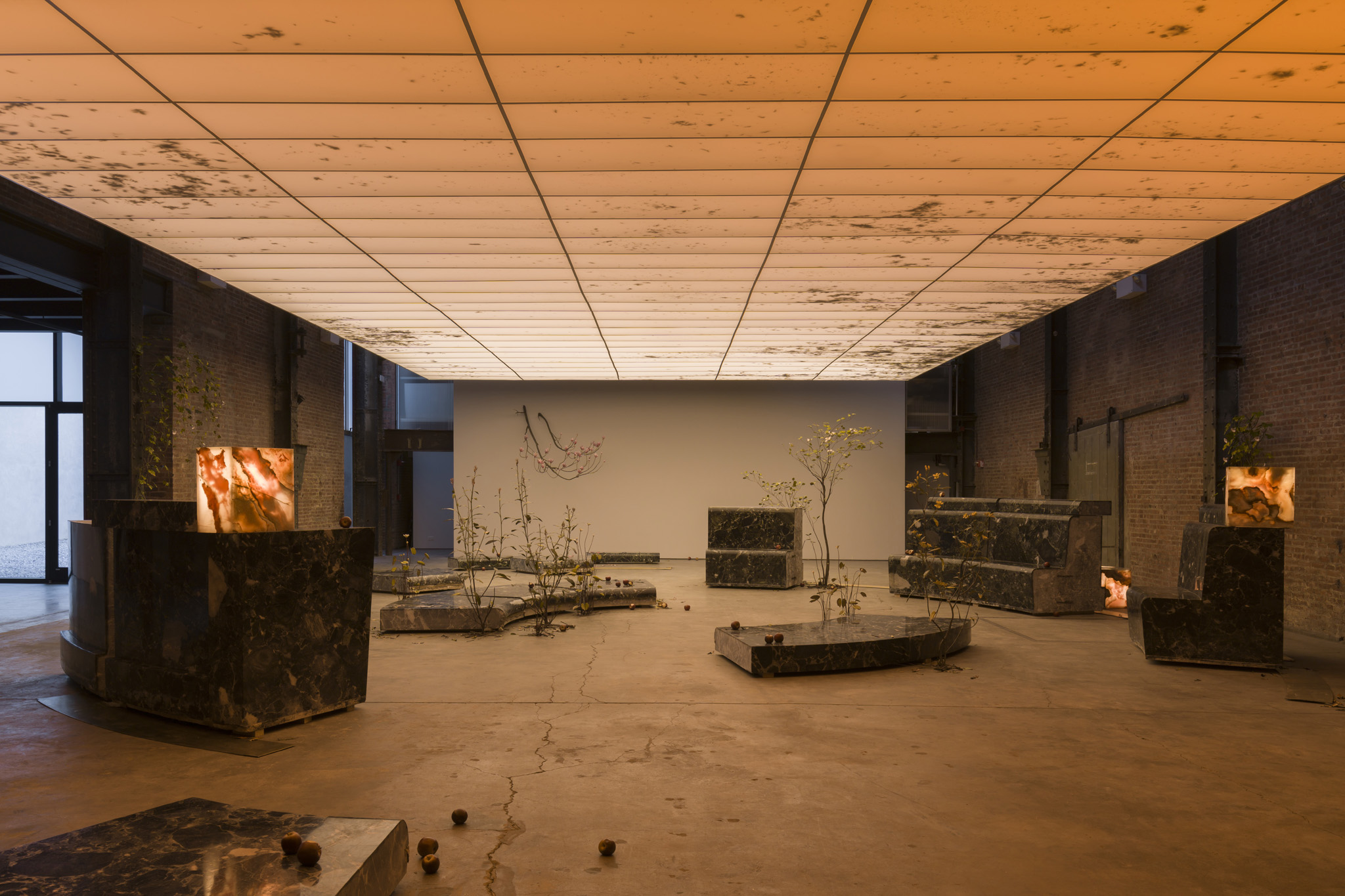


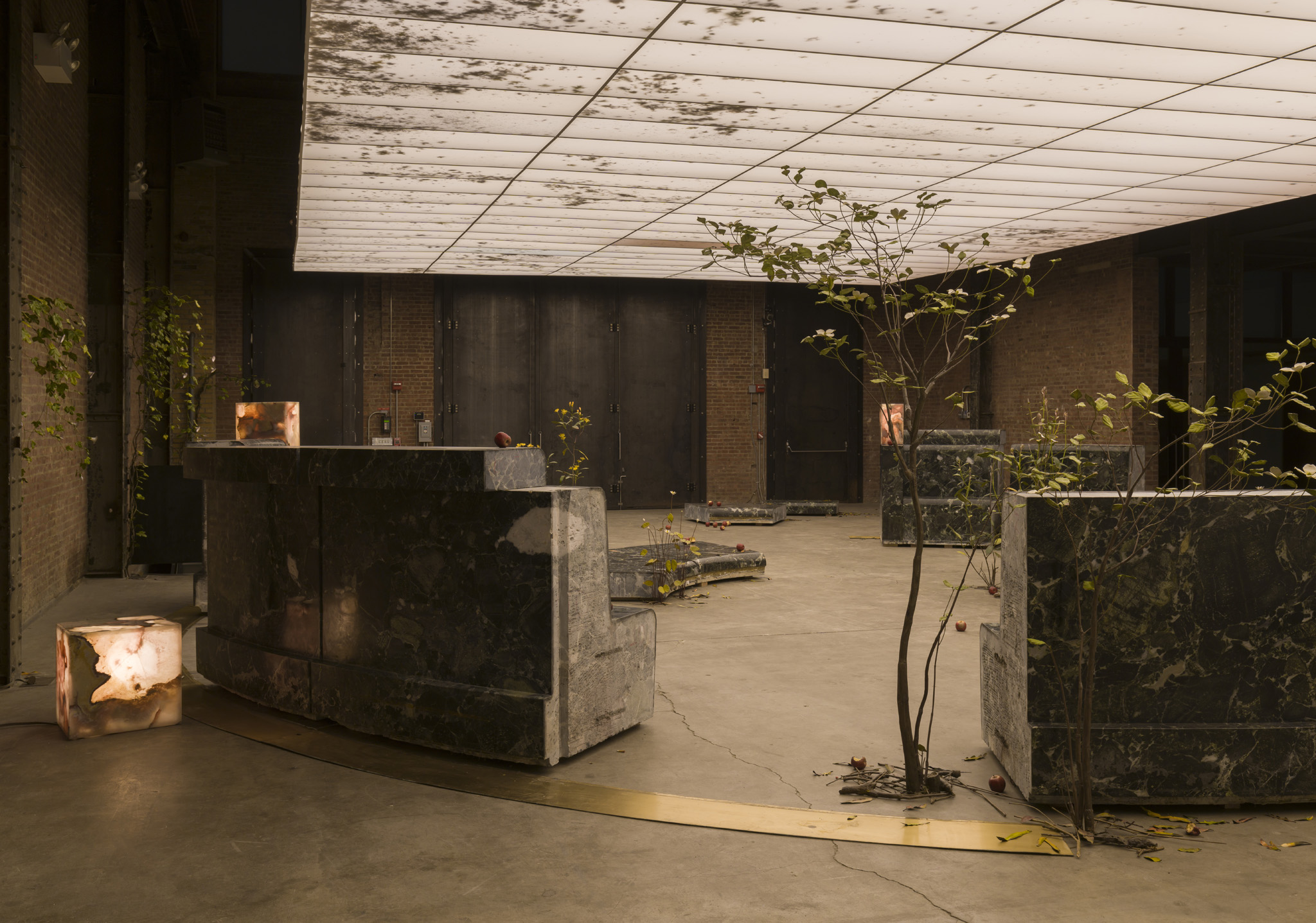
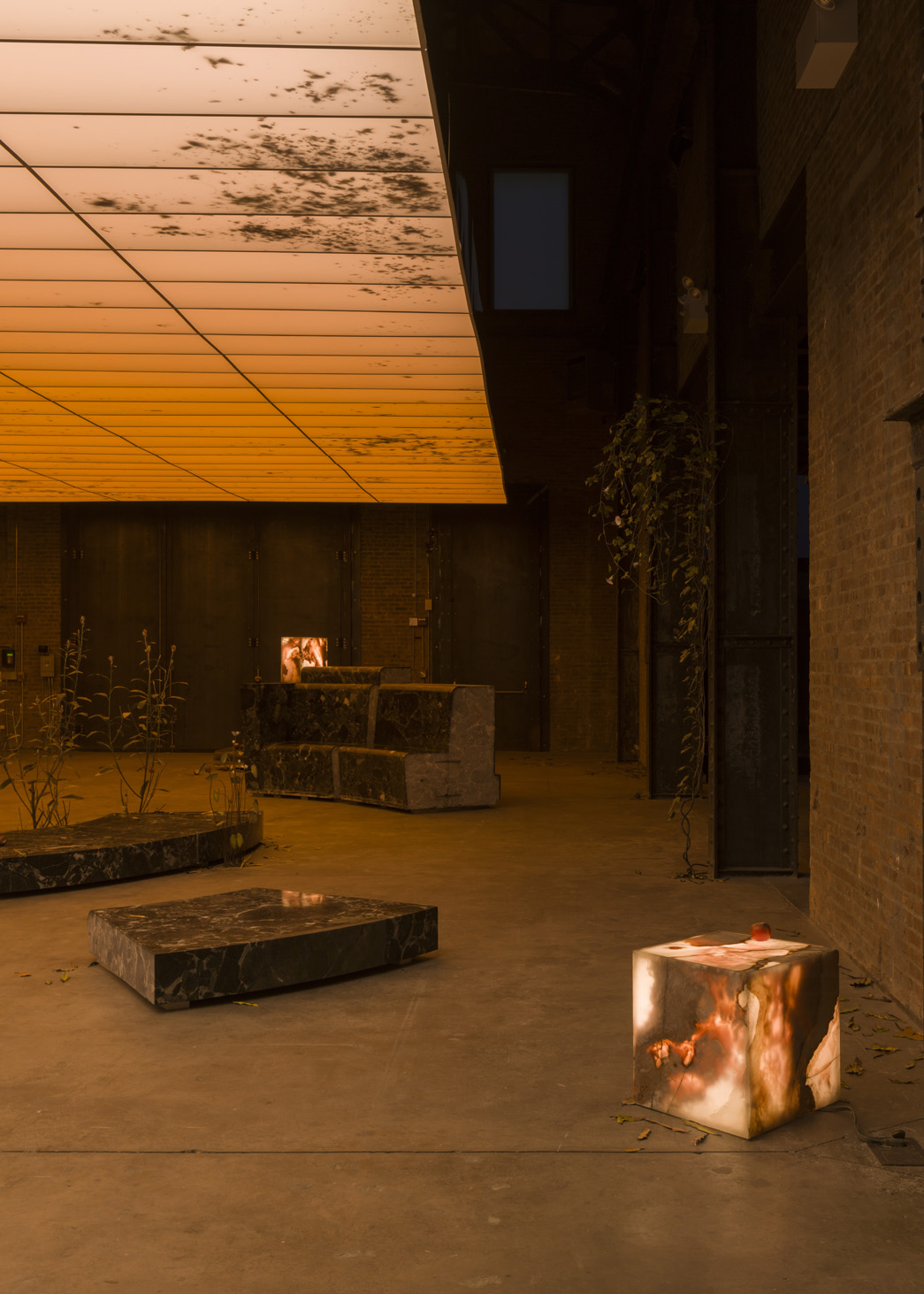

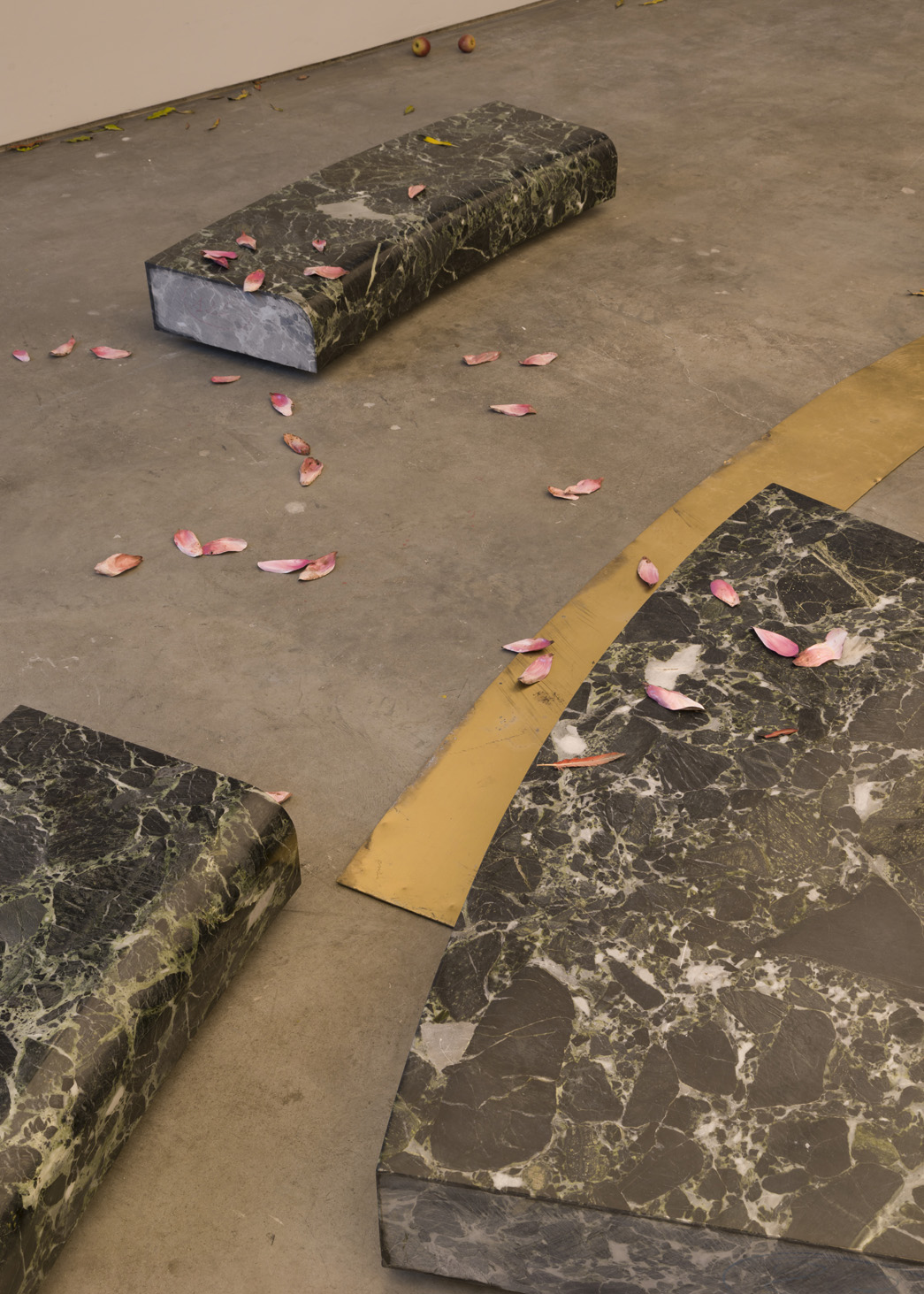



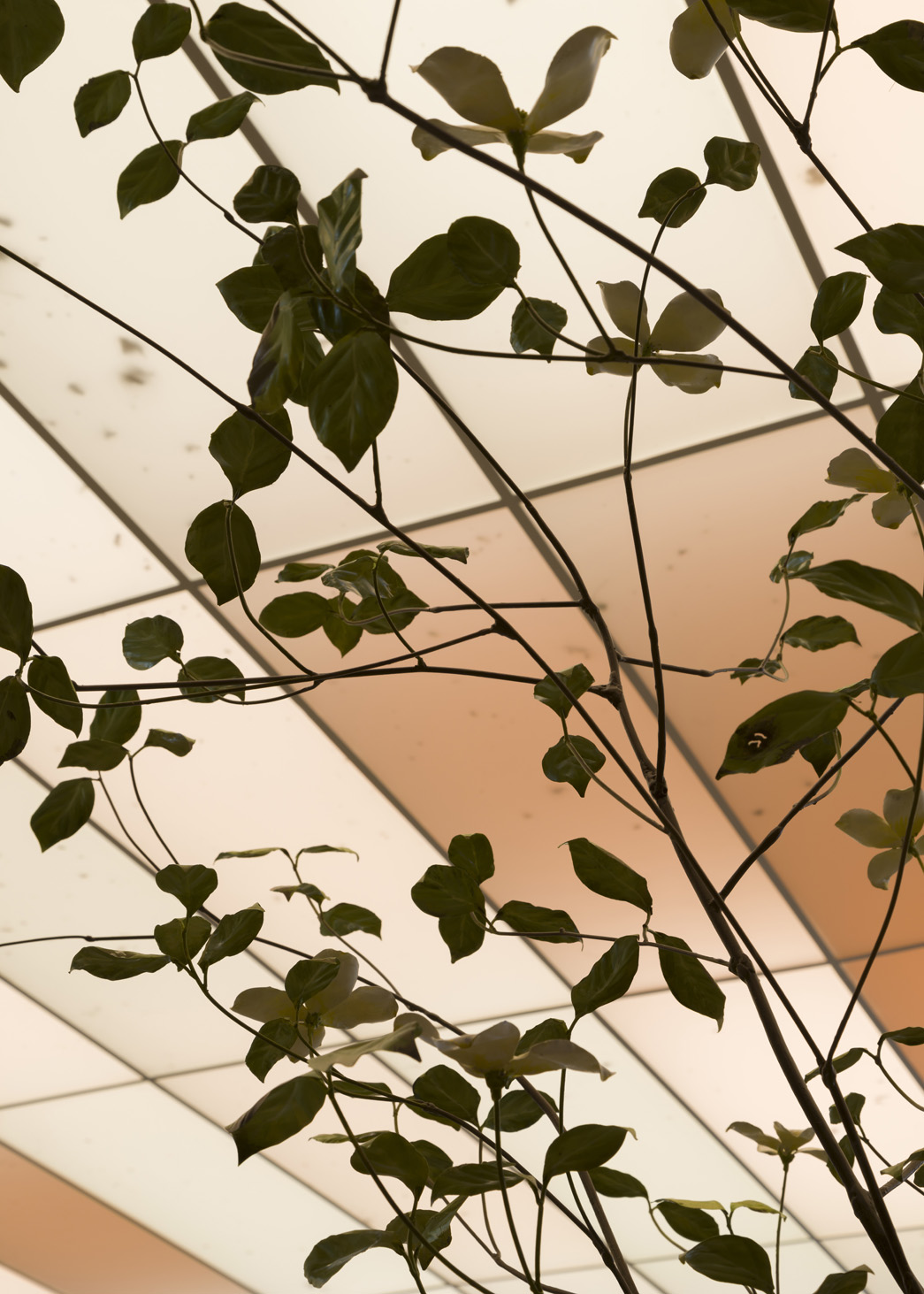
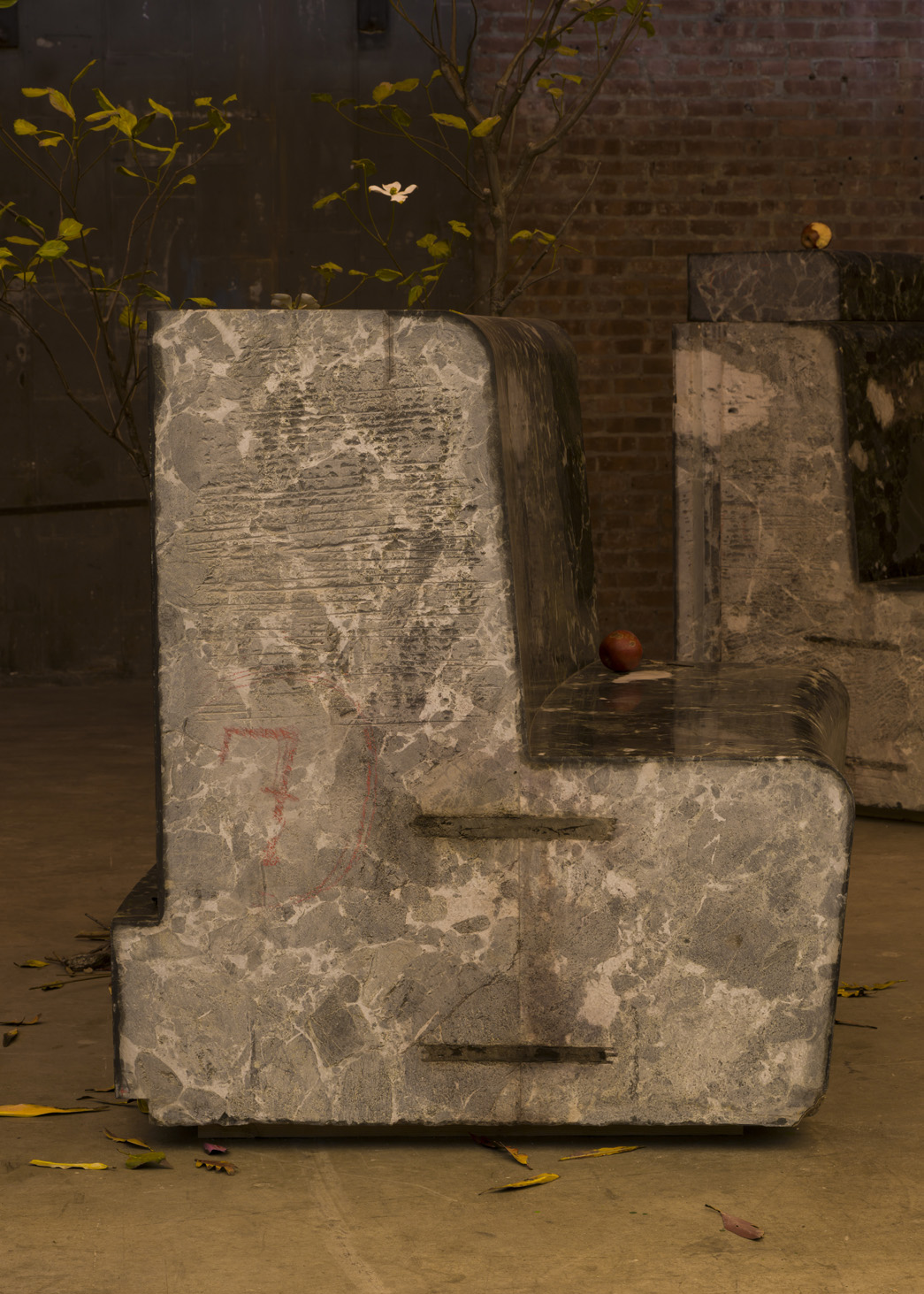


Álvaro Urbano has been engaged in conversation and collaboration with various entities across different times and places, including artists, writers, and architects; plants and animals; buildings, ruins and other human and other-than-human beings. For his project at SculptureCenter, Urbano focuses on a potential ruin, or a ruin in progress – a public artwork by the American sculptor Scott Burton (1939–1989) that was rescued from destruction and now faces an uncertain future. The work was originally installed in the lobby of the Equitable Center building in midtown Manhattan in 1986 until it was dismantled in 2020, victim to a renovation.
Atrium Furnishment consisted of a semi-circular seating area made with verde larissa marble, a set of four pink onyx lamps, and a marble centerpiece that originally contained a water feature but later was repurposed as a planter. The circular settee was outlined by a section of planted podocarpus trees and a polished bronze circle delimited the area. The floor surrounding the configuration was also intermittently inlaid with square red granite tiles designed by Burton. The overall shape of the sculptural group was reminiscent of a clock marking 9 to 5, as a reminder of the behavioral structure ruling this corporate setting. Atrium Furnishment was one of many works for public or semi-public space that Burton – a sculptor, performance artist, and writer critical to New York scenes in the 1970s and ’80s – realized throughout his life before he died of HIV-related illness in 1989. Though elements of related exterior works for Equitable Center remain in place, roughly half of his site-specific projects have been removed or modified since initially completed.
At SculptureCenter, Urbano will display roughly half of the original elements of Burton’s Atrium Furnishment. Referencing the work’s original orientation, Urbano’s new disposition will radiate across SculptureCenter’s ground floor space, altering the entire gallery and producing a topographic landscape. Burton’s public art projects always appeared as chimeras that mixed aspects of sculpture and furniture. By re-segmenting and re-organizing the work’s elements across a new site, Urbano directs attention towards Burton’s chosen materials and other inner physical dynamics and histories embedded in the artwork. Together, the marble segments elevate and sketch a new terrain, just as fragments of bedrock emerge throughout areas of nearby Central Park.
To this end, Urbano’s exhibition at SculptureCenter aims to build a speculative bridge in both time and space between the lobby of the Equitable Center and the landscape of The Ramble, a section of New York’s Central Park near 73rd and 79th Streets. Both spaces are rich in codes of social interaction and operate as meeting points in flux between the private and public spheres. Urbano’s interest in The Ramble originates from its 19th century design, which was intentionally left seemingly untamed, wild, and difficult to navigate. This portion of woodland is known as an ideal spot for birdwatching; simultaneously throughout the early 20th century it has been a popular cruising spot among queer communities. In this area unscripted sexual encounters arise with the passing of the seasons and are framed by the changing landscape, defying the hegemonic use of urban space. These furtive areas of the park become a backdrop for togetherness and queer sensibilities, where identity and ecological concerns converge. Site and circumstance, as Burton highlighted through his work, are the main notions that incite Urbano to blur similar boundaries and develop new narratives.
Botanical elements inhabit the installation – all uniquely rendered in painted metal – and reference the vegetation of The Ramble in Central Park during springtime. Magnolia branches, morning glories, and rhododendron bushes are frozen in bloom; jeffersonia plants sprout from the concrete floor. Half-eaten apples lie as if they were bitten just a few minutes ago and vines crawl up the building’s architecture.
Urbano’s (and Burton’s) marble landscape is faced by a light installation supported by a drop ceiling that emulates the grid of the city along with disjointed glimpses of corporate interiors. The installation operates as a dreamlike plane, illuminating and animating the scenery below in a duet between light and marble that draws out interiority and desire from Burton’s seemingly impersonal, disassembled work. The passing of time is seen through this hanging platform, collecting dead leaves, puddles of rain, trash, and butterflies taking flight or stuck in tar, all visible in silhouette from below. These items and their shadowy images highlight a persistent tension that runs throughout the exhibition; the flourishing of the exhibition’s landscape, growing among the marble volumes of Burton’s original piece, is confronted by the oppressive overhead presence of the lowered ceiling and the oneiric freedom it conversely suggests. Likewise Atrium Furnishment has been taken apart and compacted into storage for an indefinite amount of time, while Urbano’s exhibition speculates on and anticipates a future reassembly.
Given the lack of conditions to fully reassemble Burton’s work in any new context, Urbano underlines the precarious status of works like Atrium Furnishment regardless of the fortitude of their material composition. While Burton’s work will never be the same again, Urbano’s exhibition asks what new beginnings this assembly of the austere matter of his art engenders, and how its monumentality and fragility might revive its latent ideas.
Álvaro Urbano: TABLEAU VIVANT is curated by Sohrab Mohebbi, Director, and Kyle Dancewicz, Deputy Director, with Christopher Aque, Exhibition and Program Manager.
Scott Burton’s Atrium Furnishment is presented in collaboration with Darling Green and the Equitable Art Collection. Special thanks to Soft Network.
[Text: SculptureCenter]
©YYYYMMDD All content and design by Daniela Grabosch + Ricardo Almeida Roque unless otherwise stated. Images, Videos and Texts can only be used under permission of the author(s).